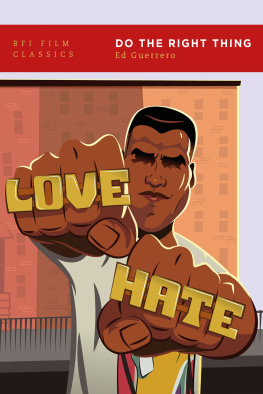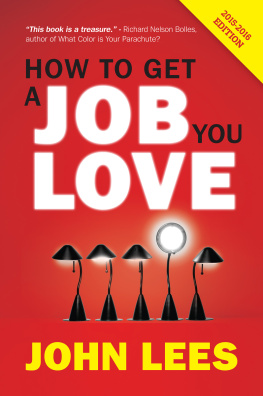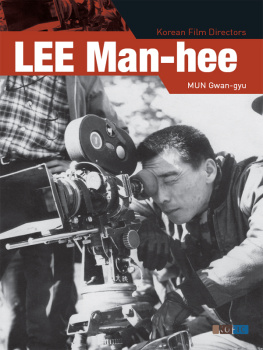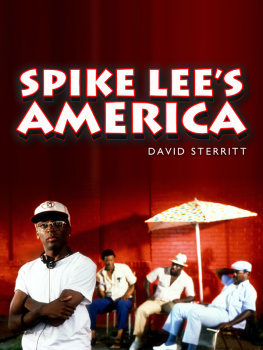Spike Lee
Recent Titles in Modern Filmmakers
Vincent LoBrutto, Series Editor
Clint Eastwood: Evolution of a Filmmaker
John H. Foote
The Brothers Coen: Unique Characters of Violence
Ryan P. Doom
Roman Polanski: A Life in Exile
Julia Ain-Krupa
Quentin Tarantino: Life at the Extremes
Aaron Barlow
Gus Van Sant: His Own Private Cinema
Vincent LoBrutto
Charlie Kaufman: Confessions of an Original Mind
Doreen Alexander Child
Wes Anderson: Why His Movies Matter
Mark Browning
The Coppolas: A Family Business
Vincent LoBrutto and Harriet R. Morrison
SPIKE LEE
Finding the Story and Forcing the Issue
JASON P. VEST
Modern Filmmakers
Vincent LoBrutto, Series Editor
Copyright 2014 by Jason P. Vest
All rights reserved. No part of this publication may be reproduced, stored in a retrieval system, or transmitted, in any form or by any means, electronic, mechanical, photocopying, recording, or otherwise, except for the inclusion of brief quotations in a review, without prior permission in writing from the publisher.
Library of Congress Cataloging-in-Publication Data
Vest, Jason P., 1972
Spike Lee: finding the story and forcing the issue / Jason P. Vest.
pages cm. (Modern filmmakers)
Includes bibliographical references and index.
ISBN 978-0-313-39226-9 (hard copy: alk. paper) ISBN 978-0-313-39227-6 (ebook) 1. Lee, SpikeCriticism and interpretation. I. Title.
PN1998.3.L44V47 2014
791.4302'33092dc23 2014019180
ISBN: 978-0-313-39226-9
EISBN: 978-0-313-39227-6
18 17 16 15 14 1 2 3 4 5
This book is also available on the World Wide Web as an eBook.
Visit www.abc-clio.com for details.
Praeger
An Imprint of ABC-CLIO,LLC
ABC-CLIO,LLC
130 Cremona Drive, P.O. Box 1911
Santa Barbara, California 93116-1911
This book is printed on acid-free paper 
Manufactured in the United States of America
For Patricia Thomas
Contents
The Modern Filmmakers series focuses on a diverse group of motion picture directors who collectively demonstrate how the filmmaking process has become the definitive art and craft of the twentieth century. As we advance into the twenty-first century, we begin to examine the impact these artists have had on this influential medium.
What is a modern filmmaker? The phrase connotes a motion picture maker who is au courantthey make movies currently. The choices in this series are also varied to reflect the enormous potential of the cinema. Some of the directors make action movies, some entertain, some are on the cutting edge, others are political, some make us think, some are fantasists. The motion picture directors in this collection will range from highly commercial, mega-budget blockbuster directors to those who toil in the independent, low-budget field.
Gus Van Sant, Tim Burton, Charlie Kaufman, and Terry Gilliam are here, and so are Clint Eastwood and Steven Spielbergall for many and for various reasons, but primarily because their directing skills have transitioned from the twentieth century to the first decade of the twenty-first century. Eastwood and Spielberg worked during the 1960s and 1970s and have grown and matured as the medium transitioned from mechanical to digital. The younger directors here may not have experienced all of those cinematic epochs themselves, but nonetheless they remained concerned with the limits of filmmaking: Charlie Kaufman disintegrates personal and narrative boundaries in the course of his scripts, for example, while Tim Burton probes the limits of technology to find the most successful way of bringing his intensely visual fantasies and nightmares to life.
The Modern Filmmakers series will celebrate modernity and postmodernism through each creators vision, style of storytelling, and character presentation. The directors personal beliefs and worldviews will be revealed through in-depth examinations of the art they have created, but brief biographies will also be provided where they appear especially relevant. These books are intended to open up new ways of thinking about some of our favorite and most important artists and entertainers.
Vincent LoBrutto
Series Editor
Modern Filmmakers
This book would not exist without the tireless efforts of my research assistant, Leiana Naholowaa. Her insight, wit, and friendship immeasurably enriched this study.
This project also profited from the enthusiasm and acumen of its two editors: Daniel Harmon helped launch this book, while James Sherman saw it to completion. Their expertise, professionalism, and patience were invaluable.
Rebecca Mathesons, Sasikala Rajeshs, and Sivakumar Vijayaraghavans meticulous attention to all mattersfactual, grammatical, mechanical, and stylistichas improved this project at every turn. Their diligence, patience, and good cheer were instrumental to this books success.
Special thanks go to the University of Guams College of Liberal Arts and Social Sciences, which awarded several research grants and a year-long sabbatical that vastly aided this projects completion. The support of CLASSs Academic Affairs Committee, Dean James Sellmann, and Associate Dean Troy McVey is greatly appreciated.
My colleagues, as always, provided welcome encouragement and collegial advice during this books composition. Dr. Evelyn Flores, Dr. David Gugin, Dr. Andrea Sant-Hartig, and Dr. Christopher Schreiner of the University of Guams Division of English and Applied Linguistics, Dr. Richard Colfax of the University of Guams School of Business and Public Administration, and Dr. Douglas Farrer of the University of Guams Anthropology Program were especially helpful during this studys long gestation.
My family and friends offered incomparable inspiration and, when necessary, a kick in the pants to ensure that this book was finished on time.
Malcolm X concludes his remarkable Autobiography of Malcolm X by stating that, no matter how meager or substantial his accomplishments may be, only the mistakes have been mine. That sentiment provides a fitting inscription for this study.
Thank you all.
Cinematic Connoisseur, Cultural Provocateur
In 2002, during two weeks of mandatory rehearsals for 25th Hour s cast, Spike Lee screened several movies every evening at 8 P.M. Lee, one of Americas most prolific filmmakers, does so for every project he directs to give his actors information, ideas, and insights about the production they will soon undertake. Edward Norton, who plays 25th Hour protagonist Montgomery Brogan, takes up the story in Lees cheekily titled, as-told-to autobiography, Thats My Story and Im Sticking to It, written by Kaleem Aftab. Lee and his actors watched William Wylers Dead End (1937)the first film starring the group of young actors now known as the Dead End Kidsbecause their New York experience bonds them, Elia Kazans On the Waterfront (1954) because Lee admires the moral upheaval that protagonist Terry Malloy (Marlon Brando) undergoes, and John Schlesingers Midnight Cowboy (1969) because this films story, according to Norton, almost floats through the New York night to capture the citys textures as well as any other movie he and Lee know.
This anecdote speaks to Lees cinematic enthusiasm, acumen, and connoisseurship. His extensive knowledge of movies does not dim Lees fervor for the art form that he has devoted his adult life to furthering, while Lees appreciation of films potential to shape its viewers perception of people and places reflects his firm command of cinemas vocabulary, grammar, and syntax. Norton reveals how Lee understands the moving pictures visual, thematic, and intellectual potential in a tidbit that also communicates the directors frankness, brio, and sense of humor. This behind-the-scenes snippet, in other words, reflects Lees love of movies as capably as any story that has been told about him since he first achieved public notoriety with his 1986 debut feature film, Shes Gotta Have It.












